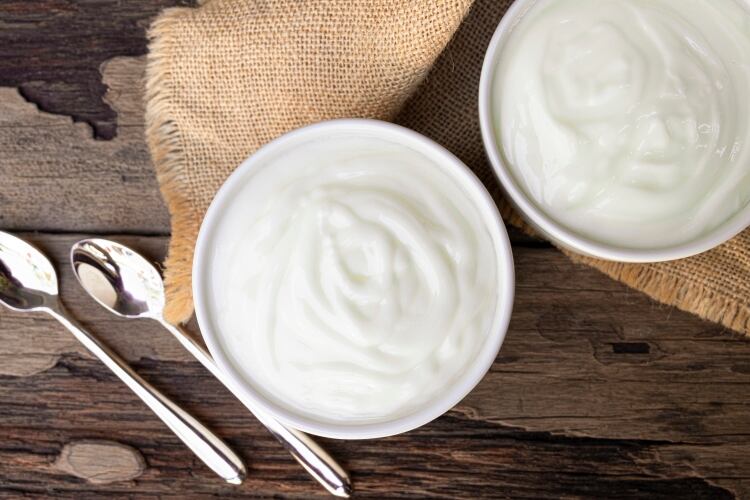In the Innova study, an average of 32% of consumers said they bought dairy alternatives “because they’re healthier” and 27% “because they bring variety to my diet,” helping to incorporate more plant ingredients.1
However, while consumers are increasingly open to trying dairy alternatives, research from Cargill suggests they have high expectations for the plant-based products – especially yogurt alternatives. In the Cargill survey, nearly half (45%) of consumers said they expect these products to deliver an identical experience to traditional dairy yogurts.
“That’s a high bar given the fundamental differences between dairy proteins and plant proteins,” said Christine Addington, senior technical specialist with Cargill.
“Dairy proteins create strong networks in acidic conditions, creating the creamy, indulgent texture consumers associate with yogurt. Most plant proteins don’t have those properties.”
Advances in processing, formulation and ingredients have all helped close the gap between traditional yogurts and those made solely with plants, but limitations remain. For example, at high usage levels, plant proteins often have solubility issues, resulting in negative textural attributes like grittiness or sandiness.
That can be a problem for brands, as the Cargill research found texture consistency, smoothness and creaminess were key factors in determining repeat yogurt purchases. One option is to use higher amounts of fat, which will deliver a creamier mouthfeel, but Addington said this can be a turn-off for some health-conscious shoppers. Hydrocolloids and starches offer another avenue to achieve the same effect, plus they help hold moisture and prevent separation through the product’s shelf life.
“Syneresis is a much greater concern in yogurt alternatives,” Addington said.
“In traditional dairy products, dairy proteins are heated and processed to form a matrix that holds in the water.”
Creating that same structure using plant proteins is much more difficult. Instead, formulators must use starches and hydrocolloids to absorb the excess water that seeps out over a product’s shelf life.
Other ingredients, especially plant-sourced fibers, can also help with texture and mouthfeel. For example, Cargill offers grades of chicory root fiber that function as fat mimetics, resulting in a creamier mouthfeel.
Sweetener solutions
While mirroring dairy’s texture and mouthfeel may create the most headaches from a formulation perspective, for consumers’, it’s often taste that is the single most important factor.
“Twenty years ago, plant-based products catered to a small consumer segment that was willing to compromise on things like taste and texture,” Addington said.
Cargill’s research indicated that’s not the case today. In the company’s survey, nearly half (49%) of consumers ranked taste as the most important attribute.
That reality adds an additional complexity to plant-based formulations. Many of the emerging plant proteins have flavor baggage, from “earthy” or “beany” notes, to astringency and bitterness.
“Finding a neutral-flavored protein can go a long way toward addressing taste limitations,” Addington said.
She’s had success with protein blends, combining nut-based options with PURIS pea protein, but emphasized that “even within the same botanical protein source, there can be significant differences in flavor profile.”
Formulators may be tempted to tackle flavor challenges with higher sweetener levels, but Cargill’s research suggests that consumers pay close attention to dairy alternative labels. In the survey, respondents reported scrutinizing sugar, fat and protein content, along with ingredient lists, more closely than traditional dairy products.
“Consumers may perceive dairy alternatives as healthier choices, which likely explains that greater attention to sugar content,” Addington said.
In the Cargill research, consumers indicated 9.2g was the sugar preference threshold in yogurt alternatives. That raises a red flag for Addington, who said that yogurt alternatives often contain 20g of sugar or more.
Alternatives like high intensity sweeteners can help tamp down on sugar. For its part, Cargill has used its ViaTech stevia leaf extract with bulk sweetener Zerose erythritol to create yogurt alternative prototypes with 6g of sugar per serving, a 70% reduction in sugar.
“While consumers are clearly intrigued by the tidal wave of new yogurt alternative products, to prevent the category for dissolving into a passing fad, our consumer research suggests manufacturers must up their formulation game,” Addington said.
“If a product doesn’t deliver on taste, texture and visual appeal, it doesn’t matter how trendy or nutritious it is – consumers won’t give it a second chance.”
1 “Dairy Alternatives Diversity as the Consumer Base Evolves,” Innova Market Insights. Dec. 17, 2020. https://www.innovamarketinsights.com/dairy-alternatives-diversify-as-the-consumer-base-evolves/
2 Cargill proprietary research. 2018. https://www.cargill.com/doc/1432126152938/dairy-white-paper-2018.pdf

